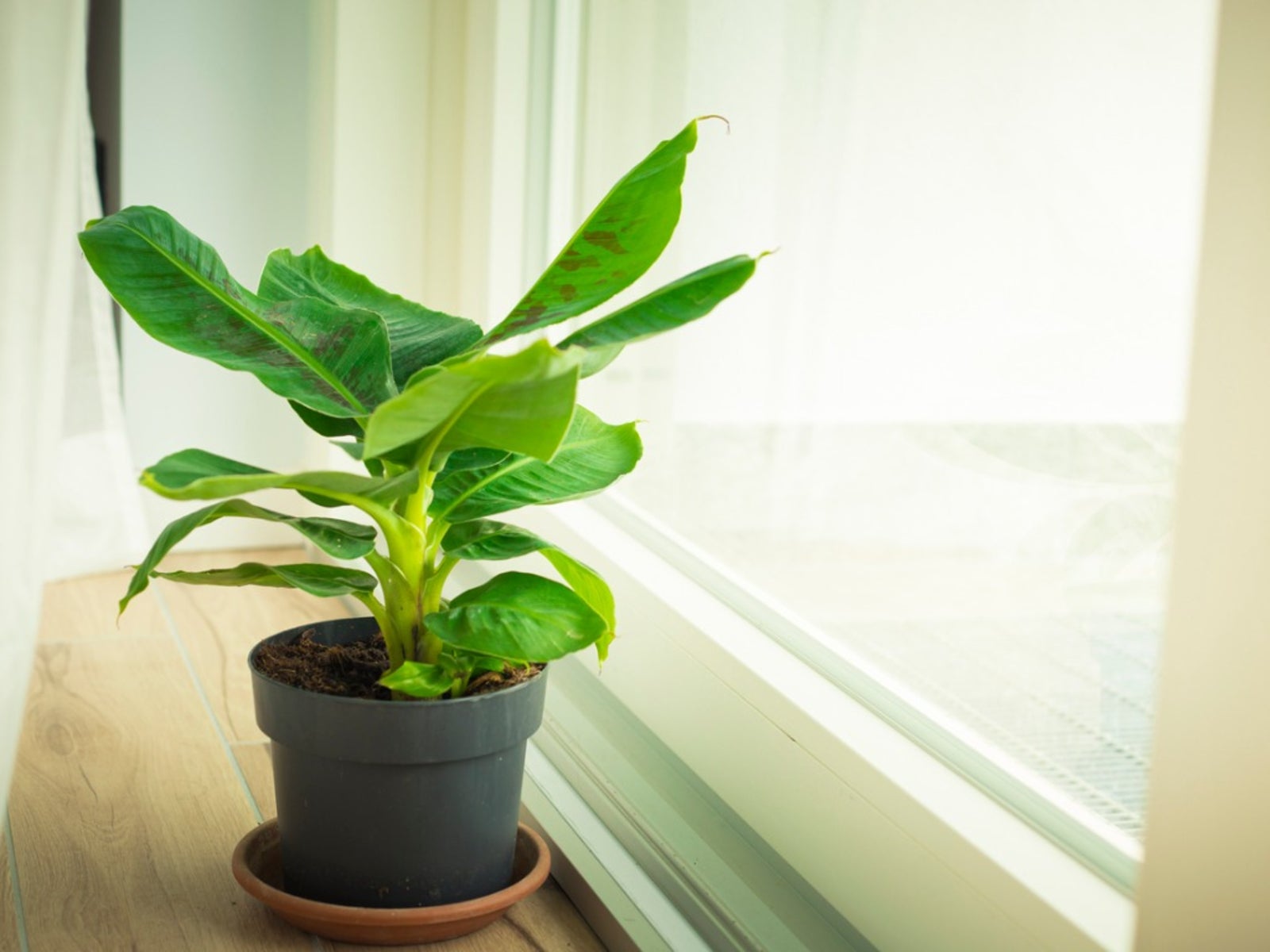
Have you ever wondered if you could grow a banana plant indoors? We all know about bananas, specifically the Cavendish variety found at the supermarket, but there are many other varieties. If you’ve been to a tropical region you may have seen one of these equatorial beauties and marveled at their height (20-40 feet/6-12 m).
When growing bananas, something that size is obviously not suited to indoors. It is possible, however, to grow a beautiful indoor banana plant. Several varieties of banana are more suited as an indoor banana tree, and they’re generally dwarf varieties. Read on to learn about growing bananas indoors.
Can You Grow a Banana Tree Indoors?
Yes, it’s possible to grow a banana plant indoors but look for a dwarf variety that will top out at under 10 feet (3 m).
Banana Plant Indoor Care
Don’t get too excited about the indoor banana plant producing actual fruit. It isn’t common for them to fruit indoors and if they do, it may take 3-4 years. If their requirements aren’t met or the variety of plant is simply ornamental, it will not fruit.
Just like all plants, banana trees have specific light, water, temperature, humidity, and soil requirements. If you can mimic these requirements in your home, you can successfully grow a dramatic, elegant banana tree in your home.
- Light
Banana plants love light, lots of it. In their native habitat, it isn’t uncommon for them to get 12 or more hours of sunlight, which is pretty difficult to replicate inside. To ensure the success of your banana tree, you might try supplemental lighting in the form of grow lights. - Water
Banana plants are thirsty plants and definitely not drought-hardy. Keep the soil consistently moist. If the leaves of your banana droop, it’s a good sign the plant needs water. Conversely, banana plants do not like wet roots so do not allow the plant to sit in a wet saucer. - Temperature & Humidity
Another difficulty with growing banana plants indoors is that most varieties like it hot and humid; about 80-89 F (27-32 C) during the day and no lower than 69 F (20 C) at night. They also like humid conditions. A humidifier next to the plant is helpful as is grouping multiple banana plants or other tropical specimens together. Mist the plant daily to up the humidity. - Soil
While bananas love water they are also susceptible to root rot so a soil that is well-draining is imperative. Choose a good quality potting soil with ingredients such as perlite to aid in drainage that is also rich in organic matter. - Fertilizer
Banana plants are heavy feeders and should be fertilized weekly with a balanced liquid fertilizer during their growing season from spring to fall. At the same time, bananas are easily over-fertilized so it is best to dilute the fertilizer to half strength. - Problems, Pests & Diseases
Wet roots can lead to fungal disease. Plants are also susceptible to anthracnose, wilt, and mosaic virus. Over-fertilization may also be an issue that results in burned leaf tips. Other common banana problems include banana weevils, borers, root nematodes, and grasshoppers outside. Inside, watch for red spider mites, aphids, scale, and mealybugs. - Pruning an Indoor Banana Plant
To keep your indoor banana plant looking its best, you may need to prune out unsightly leaves on occasion. Banana leaves can become damaged for a number of reasons. They may yellow or brown or become holey or get lesions from pests or diseases. If you do remove dead or diseased leaves, do so with a pair of sterile shears of knife. Cut the stalk an inch or so from the trunk. Also, remove any suckers that are coming up from the rhizomes.
Propagation
Your indoor plant is likely to produce suckers or “pups”, shoots that arise from the rhizomes next to the primary stem. These can be easily separated for propagation by digging up the rhizome and separating the pup from it with a sharp knife.
Be sure the pup has its own roots. Allow the rhizome to dry out for 48 hours then plant it.
Sign up for the Gardening Know How newsletter today and receive a free copy of our e-book "How to Grow Delicious Tomatoes".
Repotting
Banana trees should be repotted each year in a container that is 2-3 inches larger than its current container.
Best Indoor Banana Plant Varieties
Dwarf varieties are the best types of banana trees for growth indoors. Try banana varieties such as dwarf Cavendish, dwarf Red, or Veranda.
Frequently Asked Questions
Are Banana Plants Hard to Keep Alive?
Some varieties are easier than others to keep alive. It also depends on how and where the plant is being grown. Amazingly you can overwinter some varieties of banana in USDA zone 4 with protection. They are heavy feeders, like their soil to be moist but not sodden, and require plenty of sun; up to 12 hours per day.
How Do I Know If My Banana Tree Will Produce Fruit?
Indoor banana plant fruiting depends on the variety of banana (some are ornamental) and whether or not the tree's needs are being met, specifically, enough light. Most banana plants need at least 12 hours of sunlight per day.
An indoor banana can take up to 3-4 years to flower, a sign that fruiting is possible.

Amy Grant has been gardening for 30 years and writing for 15. A professional chef and caterer, Amy's area of expertise is culinary gardening.
